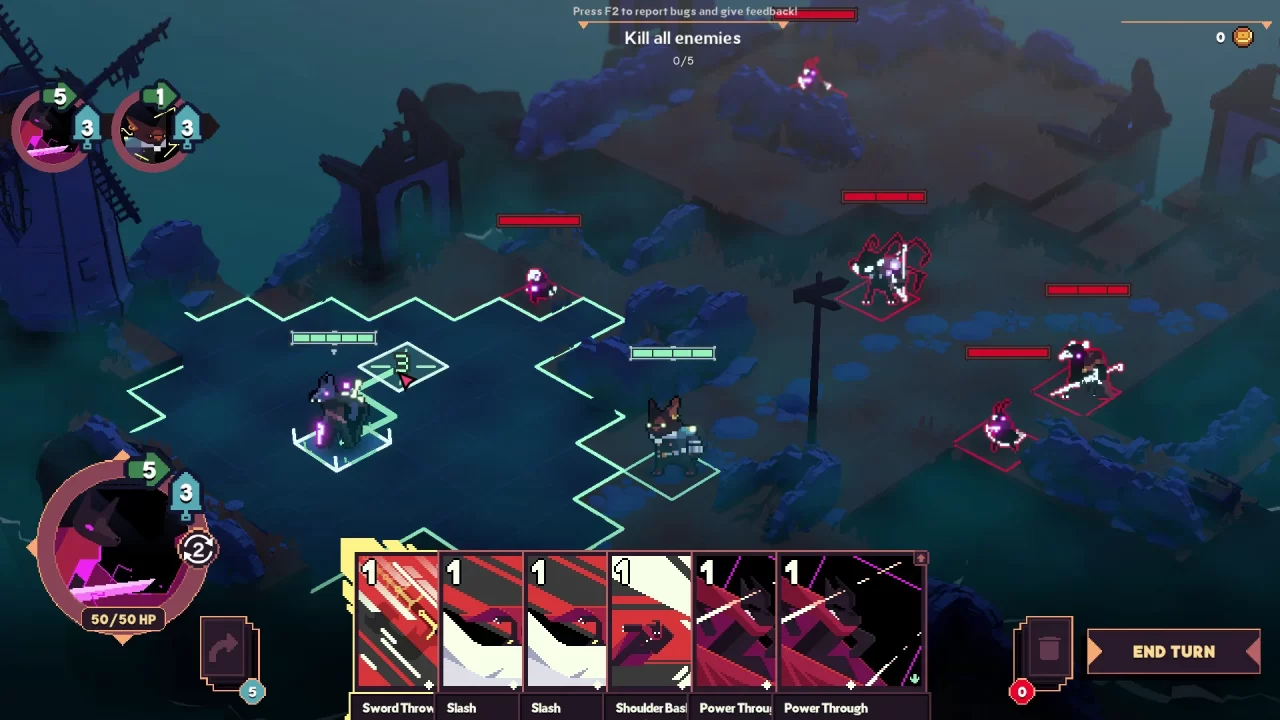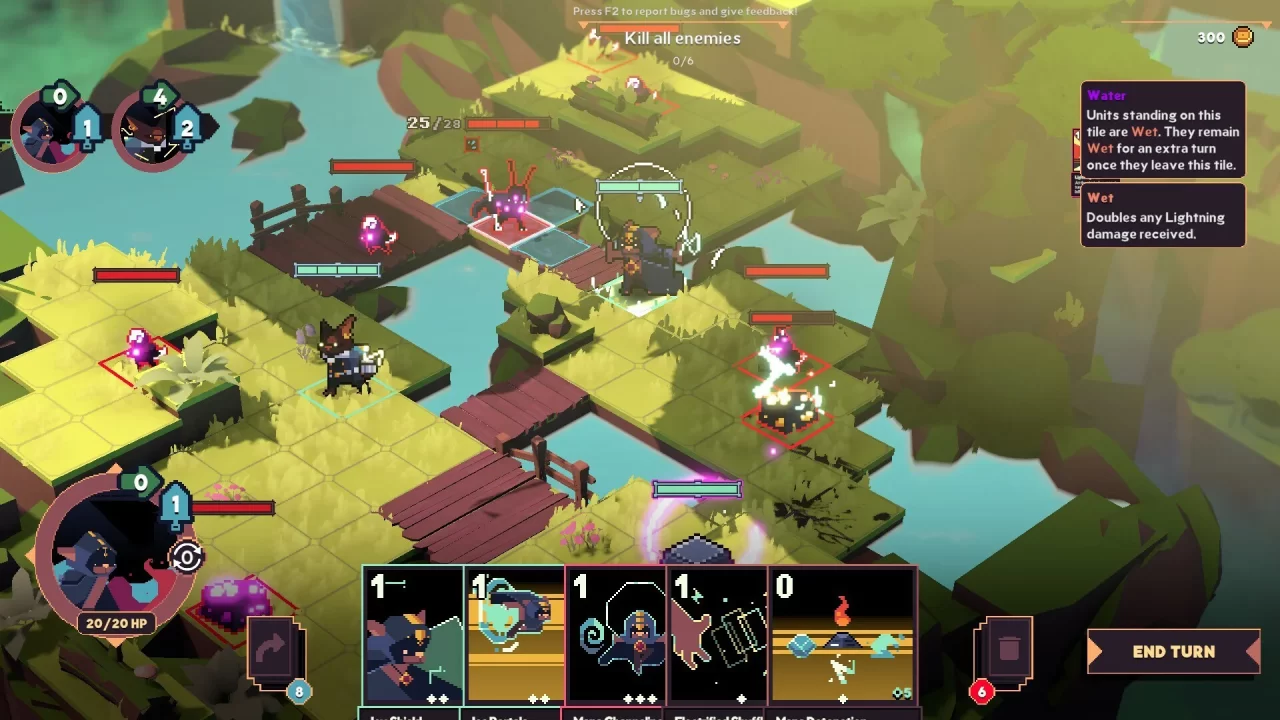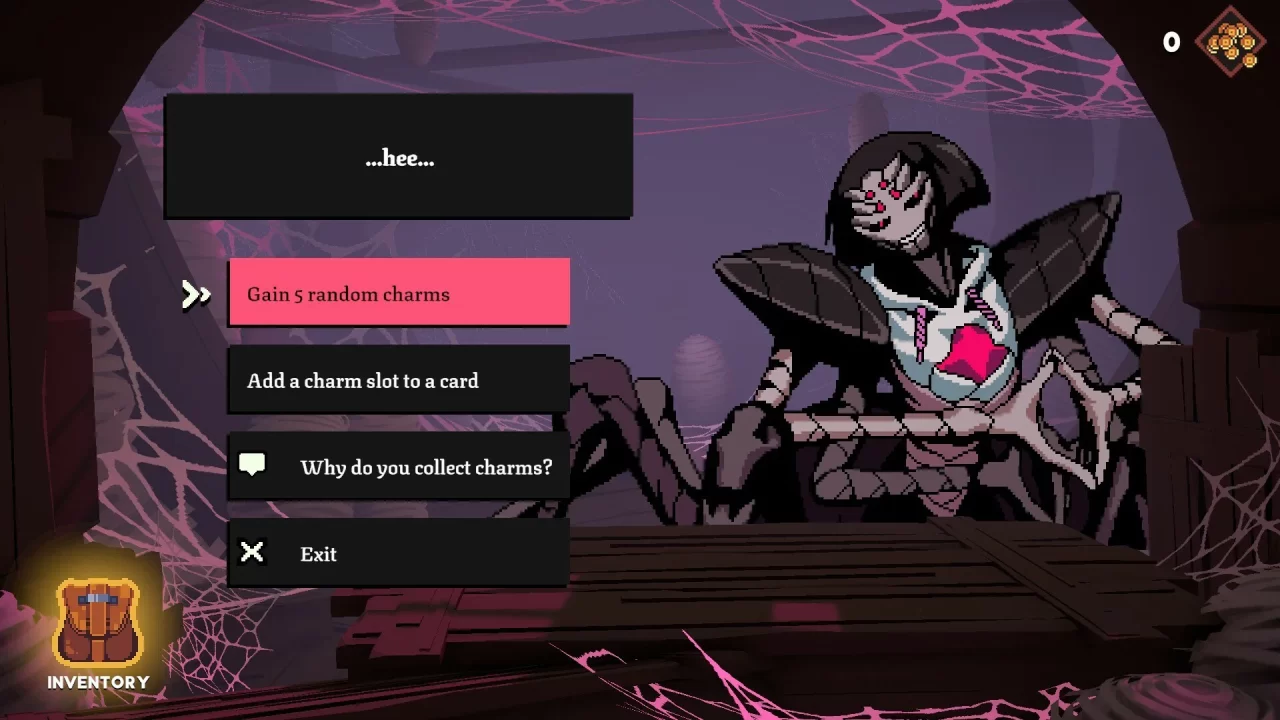From screenshots and gameplay clips alone, Shuffle Tactics looks like an extremely sensible combination of Slay the Spire, Into the Breach, and Final Fantasy Tactics. The endless replayability of roguelite deckbuilding meshed with the added depth of turn-based combat on an isometric grid sounded like the easiest 200-hour time sink anyone could ask for. As a huge fan of both genres, Shuffle Tactics was too enticing a pitch for me to miss.
Unfortunately, Shuffle Tactics never manages to become a coherent sum of its parts. The story is little more than a vehicle for a single gameplay mechanic. The combat, while functionally fine, focuses more on paying homage to its inspirations than making those borrowed mechanics gel together in a way that makes sense. To say that I was disappointed would be an understatement.
Perhaps the most egregious flaw of Shuffle Tactics is its atrocious gameplay clarity past the first level. The camera is angled such that enemy sprites block tiles directly behind them. Combined with the sheer volume of enemy units potentially on the map at a given time, you spend as much time trying to click on the correct tile as you do planning out which cards to play. Some bosses occupy multiple tiles at once, making precise play around their oversized sprites impossible. The well-crafted pixel artwork is squandered on these overcrowded battlefields, leaving it difficult to even locate your character.
Compounding the issue is the lack of a functional enemy intent system. Enemy movement and attack overlays blur together into a confusing mess, made even harder to parse on the isometric grid where sprites block tiles and perspective hides crucial information. Only a handful of attacks are clearly telegraphed in bright red, but these rare moments of clarity are more an exception than the rule. What should be careful tactical planning devolves into fighting not only the enemies but also the interface itself while trying to get a grip on what’s happening.
What about the gameplay from the player side, though? Surely, if the cards feel fun to play, they can cover for some of the weaknesses in encounter design? Unfortunately, I can’t give a positive answer here, either. Shuffle Tactics copies mechanics verbatim from its inspirations without nearly as much consideration for how they fit into the loop as a whole.
Let me indulge in some comparison with Slay the Spire‘s game design: drawing five cards and discarding your hand at the end of your turn is a clever way of ensuring players always have options while forcing them to adapt. You can’t sit on cards for the “perfect play,” and instead must do the best with what you’re given. Even with this chaotic player agency, there are two consistent rocks to anchor strategies around: enemy intent is always clear, and attacks are always in range. These simple guarantees not only curb the frustrations of the occasional poor draw order but also provide a stable foundation for long-term strategy.
Shuffle Tactics misses both anchors, leaving its strategic gameplay adrift. You’re subjected to all the turbulence of only having a fraction of your moves available at any given turn, with none of the baseline guarantees to support outlining a game plan. It’s little surprise that the least frustrating path to victory I found was abusing cards that return to your hand at the start of every turn, not because it was clever or particularly compelling, but because it offers the only semblance of consistency in a game that promises strategy yet rarely delivers it.
The sidekick system, meanwhile, only adds to this sense of imbalance. The recruitable sidekicks’ strength levels swing so wildly that some function as point-and-click powerhouses while others are barely worth picking up. You could argue that this variance is part of the roguelite or deckbuilding DNA, but this gulf in baseline usefulness feels less like intentional design and more like unfinished tuning. The scarcity of sidekick upgrades further affirms this feeling; picking a weak sidekick early can kill the pace of the game, turning what should be a meaningful addition to your arsenal into a predictably tedious babysitting sidequest.
Even when they are effective, sidekicks don’t necessarily improve the game’s flow. With a dozen or more enemies crowding the grid at once, their presence often seems like a stopgap solution to redirect aggro away from the player. As you can imagine, this only makes the already chaotic, overcrowded board state even harder to read.
The charm upgrading system remains stuck in a similar rut. Though the various effects provided by the charms are more interesting than generic stat boosts, a myriad of restrictions that make little sense in practice chain them down. Every debuff-inducing charm I found was locked to single-target applications only, and because charms apply their effects onto the tile that you select, any card that has you moving to the tile you selected has you debuffing your own unit. What should be a flexible, build-defining system instead feels like an oversight: a punishment for interacting with the game as intended, instead of the freeform experimentation charms are ostensibly designed to encourage.
Even charms with other effects that sound useful can become undermined by their implementation. With no restrictions on charm placement, it’s easy to attach one that interacts with game mechanics that have nothing to do with the card itself (i.e., movement-enhancing effects onto a card that has you standing in place to attack), resulting in a complete waste of an upgrade. While I don’t expect guardrails on most mechanics in a roguelite, this level of execution once again comes across less like intentional design and more like under-tested systems left for the player to sort out.
However, I do want to commend the sheer volume of content available in the game. With multiple heroes, each starting with their own deck, and hundreds of additional cards to unlock, Shuffle Tactics certainly doesn’t lack the breadth of a full-priced release. If the dopamine hit of steadily expanding an armory is your kind of reward loop, Shuffle Tactics has you well covered.
Yet for all that content, the foundation Shuffle Tactics ultimately rests on is shaky. The isometric grid muddies the waters instead of providing meaningful depth, the companion and charm systems feel several iterations short of being finished, and the core deck mechanics lack the consistency and design work that make its inspirations so enduring. Shuffle Tactics is brimming with things to unlock but starved for meaningful ways to enjoy them, leaving it less a cohesive “greatest hits album” of roguelite elements and more of a confused compilation of good ideas played out of tune.





